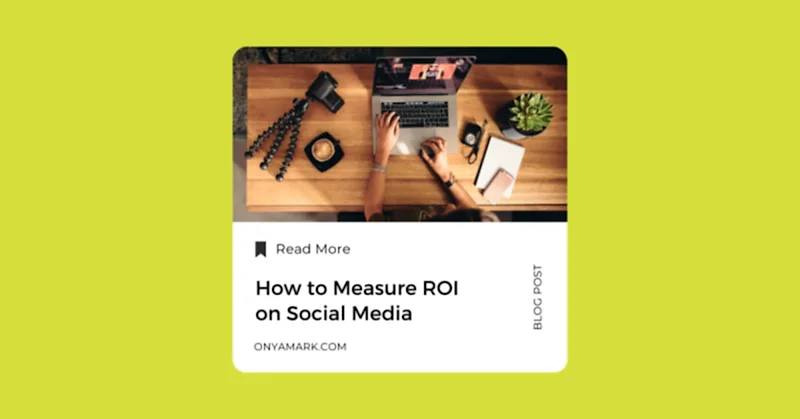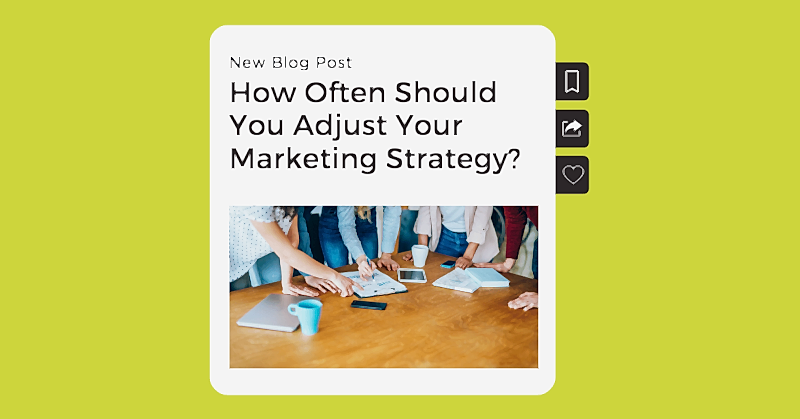Have you ever thought that the success of social media is impossible to measure? We understand it can be tricky, but it IS possible. A strategy rooted in analytics is key.
First, what is Social Media ROI? ROI= Return on Investment. It measures the value generated by the time and money you’ve placed into social media. As a note, this isn’t always monetary.
Why Measure Social Media ROI?
Tracking social media ROI is crucial for a number of reasons:
Resource Allocation:
By tracking ROI, organizations can assess the effectiveness of their social media efforts and allocate resources more efficiently. This involves understanding which platforms, campaigns, or strategies are providing the best returns so that you can focus your time and budget on what works best. Marketing budgets are often scrutinized, and decision-makers want to know the returns they are getting on their investment. By demonstrating a positive ROI, you can justify the budget allocated to social media marketing and potentially secure additional resources for future campaigns.
Performance Measurement:
We’ll talk about this more below, but ROI metrics help measure the performance of your social media marketing activities. It allows you to evaluate the success of specific campaigns, posts, or advertisements. Understanding what is working and what isn’t enables you to make data-driven decisions to optimize your strategy. Remember that social media platforms are dynamic and what worked today may not work tomorrow. Analyzing patterns will alert you to when something has been adjusted and may require you to adjust in return.
Demonstrating Value to Stakeholders:
For organizations, particularly those with stakeholders, it’s essential to demonstrate the value of social media marketing efforts. ROI metrics provide tangible evidence of the impact of social media on the bottom line, making it easier to justify continued investment and support.
Customer Insights:
Analyzing ROI data can provide insights into customer behavior and preferences. Understanding which content or products resonate with your audience can guide future marketing efforts and overall business strategy.
Here’s How To Best Deliver Roi With Your Social Media Efforts:
Identify Your KPIs
Your social media efforts will be pointless if they aren’t tied to organizational goals. Before you can even measure ROI, you need to establish clear goals for your organization, so you can align those goals to relevant social media metrics.
Select Your Engagement Metrics
Social media engagement metrics provide valuable insights into how your audience interacts with your content. These include likes, comments, shares, and clicks. Tools like Facebook Insights, Instagram Insights, and Twitter Analytics offer detailed data on these metrics.
Establish Conversion Tracking
Implement conversion tracking to measure direct revenue generation or task completion from social media. Platforms like Facebook and Instagram allow you to set up conversion events, such as website purchases or sign-ups. Connecting these events to your ROI metrics provides tangible evidence of social media’s impact on your bottom line.
Track & Adjust
Once you’ve established your KPIs and selected engagement metrics, you can track the data against it. Check your numbers consistently and take note of what is performing well and what is not doing well so you can adjust. For example, if your organization’s goal is to increase brand awareness, you’ll be monitoring shares, reach, and followers. Tools like Google Analytics and social media analytics platforms track these metrics.
Calculate Customer Acquisition Cost (CAC)
Calculating the cost to acquire a customer through social media is crucial for determining ROI. Divide the total social media advertising spend by the number of customers acquired during a specific period. Benchmarking this against the customer lifetime value (CLV) provides insights into the sustainability and profitability of your social media campaigns.
Branch Out
Remember, what you’re doing organically on social media is only one small piece of your conversation funnel. Most often, the purpose of organic social is to increase top-of-funnel goals, like brand awareness or customer loyalty.
If you aren’t seeing the ROI you were expecting, it’s time to look at your holistic marketing strategy. You need to leverage multiple channels (cohesively) to ensure you’re reaching your audience throughout every point of their interactive journey. You may need to introduce emails, blogs, paid media, or multiple platforms.
Keep in mind that social media ROI is a long-term goal. Seeing an influx of website traffic because of one viral post doesn’t equate to long-term ROI. On the flip side, one month of low numbers doesn’t mean you’ve failed. It’s a long process and you can’t expect organic social alone to be doing all the work for your ROI.
If you need assistance in how to build and track ROI that is successful for your organization, please reach out to Onya today to learn more!








